Everything About Robotic Knee Replacement
A robotic knee replacement is similar to a standard knee replacement in that it replaces the knee joint. Damaged tissue in your knee is removed and replaced with an artificial joint by your surgeon. The only difference is that it’s made with the help of a robotic arm.
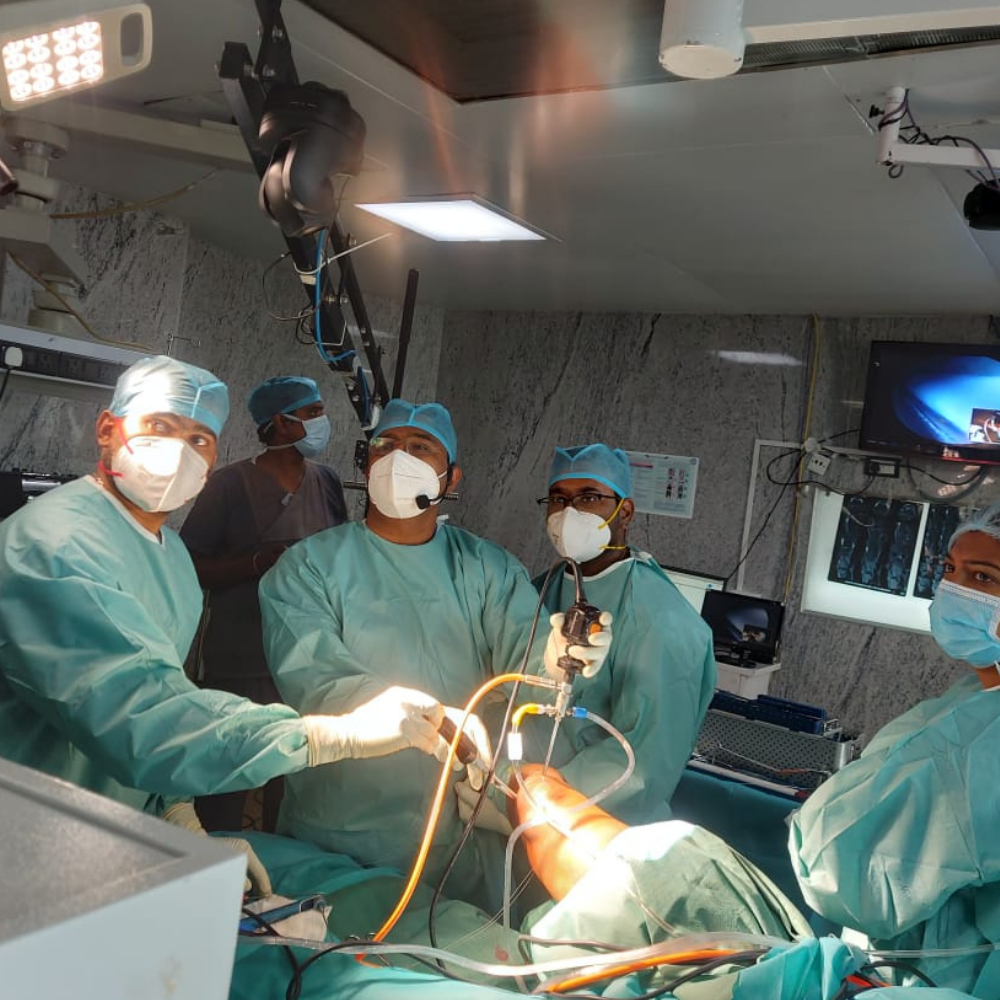
Everything About Robotic Total Knee Replacement and its Treatment
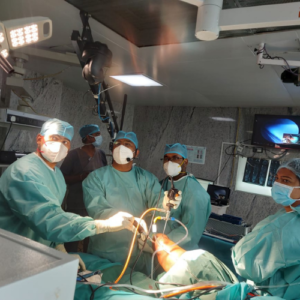
A robotic knee replacement is similar to a standard knee replacement in that it replaces the knee joint. Damaged tissue in your knee is removed and replaced with an artificial joint by your surgeon. The only difference is that it's made with the help of a robotic arm.
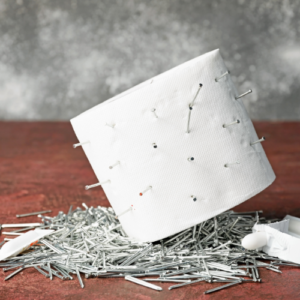
What is Anal fissure?
An anal fissure is a tear or cut that exposes the anal sphincter muscle beneath the thin lining of your anus. Skin damage usually causes the edges of the fissure to separate, the muscle to spasm, and the situation to get worse. After the spasm, the condition can be painful, and it might take some time for the wound to heal. Bowel disorders such chronic constipation and diarrhea aggravate anal fissures over time. Any individual, regardless of age or gender, is susceptible to an anal fissure. Despite the fact that medical records indicate that people between the ages of 20 and 40 are more likely to develop anal fissures.
What is Anal fissure?
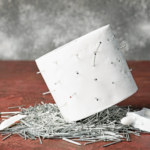
An anal fissure is a tear or cut that exposes the anal sphincter muscle beneath the thin lining of your anus. Skin damage usually causes the edges of the fissure to separate, the muscle to spasm, and the situation to get worse. After the spasm, the condition can be painful, and it might take some time for the wound to heal. Bowel disorders such chronic constipation and diarrhea aggravate anal fissures over time. Any individual, regardless of age or gender, is susceptible to an anal fissure. Despite the fact that medical records indicate that people between the ages of 20 and 40 are more likely to develop anal fissures.
Recovery Rate
The rate of recovery following any surgery varies from person to person. Everybody has a different capacity for healing, hence everyone's time spent recovering from anal fissure surgery is different. Anal fissure open surgery recovery often lasts two to three months, while full laser surgery recovery typically takes one to four weeks. After one month, of recovery, The patient must adhere to the recovery advice and suggestions given by the surgeon for at least one month following anal fissure surgery. It is advised that the patient avoids engaging in any activity that creates stress on the surgery site. The patient should only eat foods high in fiber and avoid foods that are very oily and spicy. The patient should routinely take sitz baths and keep the surgical area free of infection. Recovery after 2 Months The patient will feel a significant reduction in pain at the surgical location after 2 Months. Scars, however, might exist. It would take a few more days for the scars to fully heal and vanish. The patient may resume regular eating habits and return to work without encountering any significant difficulties. Recovery after 3 months The patient would be free of any post-operative discomfort after 3 months. At the surgical location, there wouldn't be any scars, and the incision would also be fully healed.
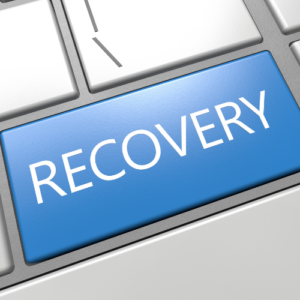
Recovery Rate
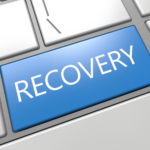
The rate of recovery following any surgery varies from person to person. Everybody has a different capacity for healing, hence everyone's time spent recovering from anal fissure surgery is different. Anal fissure open surgery recovery often lasts two to three months, while full laser surgery recovery typically takes one to four weeks. After one month, of recovery, The patient must adhere to the recovery advice and suggestions given by the surgeon for at least one month following anal fissure surgery. It is advised that the patient avoids engaging in any activity that creates stress on the surgery site. The patient should only eat foods high in fiber and avoid foods that are very oily and spicy. The patient should routinely take sitz baths and keep the surgical area free of infection. Recovery after 2 Months The patient will feel a significant reduction in pain at the surgical location after 2 Months. Scars, however, might exist. It would take a few more days for the scars to fully heal and vanish. The patient may resume regular eating habits and return to work without encountering any significant difficulties. Recovery after 3 months The patient would be free of any post-operative discomfort after 3 months. At the surgical location, there wouldn't be any scars, and the incision would also be fully healed.
Causes
Chronic constipation
Chronic diarrhea
Rough anal sex
Foreign objects being inserted into the anus
Passing a bowel movement while exerting excessive effort
Too-hard, bulky, and dry stool passing
Injury to the anal region
Underlying illnesses include sexually transmitted diseases, anal cancer, and Chrohn’s disease
Disruption of the anorectal area’s blood supply
Symptoms
- Failure to pass the stool
- Having bowel motions pain
- Stool that contains blood as well as cracks and breaks in the anal canal
- An area of the anal region is itching and burning.
- painful urination
- Harmful anal discharge
Causes
Chronic constipation
Chronic diarrhea
Rough anal sex
Foreign objects being inserted into the anus
Passing a bowel movement while exerting excessive effort
Too-hard, bulky, and dry stool passing
Injury to the anal region
Underlying illnesses include sexually transmitted diseases, anal cancer, and Chrohn’s disease
Disruption of the anorectal area’s blood supply
Symptoms
- Failure to pass the stool
- Having bowel motions pain
- Stool that contains blood as well as cracks and breaks in the anal canal
- An area of the anal region is itching and burning.
- painful urination
- Harmful anal discharge
Diagnosis
Test
Self diagnosis
Test
A minor break or cut on the anus lining is known as an anal fissure. An anorectal specialist can recognize an anal fissure with their unassisted eyes. However, the doctor may advise completing the following diagnostic procedures to confirm the condition:
Flexible sigmoidoscopy: For this test, the doctor will place a tiny camera at one end of a thin, flexible tube within your anus. The majority of patients under 50 with no known anorectal diseases are advised to undergo this test.
A small, flexible tube is inserted within the rectum during a colonoscopy to examine the colon. Colonoscopy is possible for patients above the age of 50. Additionally, individuals who are at risk for anorectal issues, chronic diarrhoea, and severe abdominal pain have this test.
An examination called an anoscopy involves inserting a tubular instrument into the anus. The tool provides a thorough imaging picture of the anus and rectum and aids the physician in determining and pinpointing the precise location of the issue.
Self diagnosis
The symptoms of an anal fissure are frequently mistaken for those of haemorrhoids or piles. Even though there is a good chance you will feel awkward and ashamed discussing your symptoms with your doctor, it is crucial that you do so. Anal fissures can be identified by a proctologist with skill based solely on physical examination. However, in order to rule out the issue, the fissure doctor may need to perform a rectal examination in order to fully diagnose the situation. In order to feel the abnormal growth, the doctor places a gloved finger inside your anus during this procedure.
Anal cracks are typically visible just by visual inspection. But before deciding on the best course of treatment, the anorectal doctor may require you to undertake more testing, depending on the severity of your condition. Anal fissures frequently occur alongside other significant medical disorders including Crohn’s disease. If so, the proctologist may advise sigmoidoscopy, colonoscopy, or anoscopy for a more thorough assessment. The following inquiries may also be asked of you by the doctor in order to better understand your condition:
When did you first notice pain in your anal area?
How painful is it for you to take a dump?
Is there a member in your family that has anal fissures?
What kind of diet do you usually follow?
Are you a sporty person?
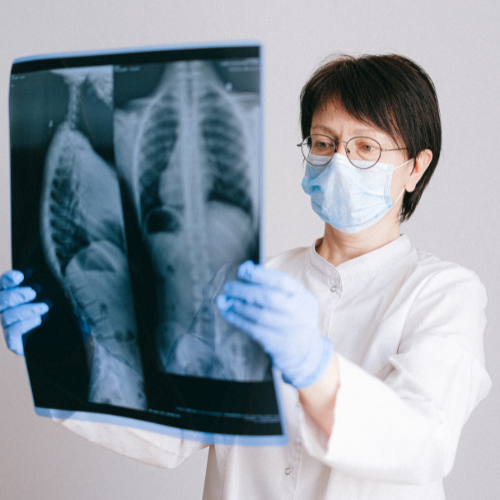
Diagnosis
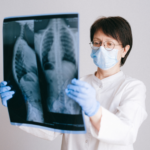
Test
Self diagnosis
Test
A minor break or cut on the anus lining is known as an anal fissure. An anorectal specialist can recognize an anal fissure with their unassisted eyes. However, the doctor may advise completing the following diagnostic procedures to confirm the condition:
Flexible sigmoidoscopy: For this test, the doctor will place a tiny camera at one end of a thin, flexible tube within your anus. The majority of patients under 50 with no known anorectal diseases are advised to undergo this test.
A small, flexible tube is inserted within the rectum during a colonoscopy to examine the colon. Colonoscopy is possible for patients above the age of 50. Additionally, individuals who are at risk for anorectal issues, chronic diarrhoea, and severe abdominal pain have this test.
An examination called an anoscopy involves inserting a tubular instrument into the anus. The tool provides a thorough imaging picture of the anus and rectum and aids the physician in determining and pinpointing the precise location of the issue.
Self diagnosis
The symptoms of an anal fissure are frequently mistaken for those of haemorrhoids or piles. Even though there is a good chance you will feel awkward and ashamed discussing your symptoms with your doctor, it is crucial that you do so. Anal fissures can be identified by a proctologist with skill based solely on physical examination. However, in order to rule out the issue, the fissure doctor may need to perform a rectal examination in order to fully diagnose the situation. In order to feel the abnormal growth, the doctor places a gloved finger inside your anus during this procedure.
Anal cracks are typically visible just by visual inspection. But before deciding on the best course of treatment, the anorectal doctor may require you to undertake more testing, depending on the severity of your condition. Anal fissures frequently occur alongside other significant medical disorders including Crohn’s disease. If so, the proctologist may advise sigmoidoscopy, colonoscopy, or anoscopy for a more thorough assessment. The following inquiries may also be asked of you by the doctor in order to better understand your condition:
When did you first notice pain in your anal area?
How painful is it for you to take a dump?
Is there a member in your family that has anal fissures?
What kind of diet do you usually follow?
Are you a sporty person?
Risks & Complications
Risks/ complications / contradictions during anal fissure surgery
Risks factors of anal fissure
Risks/ complications / contradictions during anal fissure surgery
Anal fissure surgery is often effective, and patients report high levels of satisfaction. The surgical procedure could, however, encounter problems, just like any other operation. Complications and inconsistencies that may arise include the following:
Hemorrhage – Although it’s extremely unlikely, bleeding or haemorrhaging could happen while an anal fissure is being surgically repaired. The doctor might need to do extra surgery to stop the bleeding if an unexpected haemorrhage happens.
Incontinence – A number of patients claim to experience brief incontinence just after surgery. The patient may feel stoma leakage and have trouble holding their breath at this time. The issue could persist for up to two to three weeks or until the patient is fully recovered. The likelihood of the incontinence issue disappearing once the person has fully recovered is very high.
Perianal abscess- Despite the rarity of this complication, some patients who underwent surgery to treat an anal fissure for an abscess also went on to develop an anal fistula. In these circumstances, the patient could need additional surgery to empty the abscess.
Tear that extends to the surrounding muscle – The anal sphincter, nearby muscles, or nerves may be damaged as a result of direct thermal or mechanical trauma, as well as later-developed infections. Incontinence may also develop from this. Careful surgical technique is crucial to preventing this problem by maintaining the integrity of the anal sphincters.
Risks factors of anal fissure
The chance of getting an anal fissure may be increased by the following factors:
- Severe diarrhea
- Chronic constipation
- Limits during urinating Low-fiber diet
- Has anyone undergone weight-loss surgery recently?
- Trauma caused to the anal area due to any injury or accident
- Any inflammation in the anal region.

Prevention of anal fissure
Myth and facts
Prevention of anal fissure
Wheat bran grain bran
whole grains
grains, beans, and oats
Citrus and prune fruits
Stay hydrated – Maintaining hydration is an effective method to avoid constipation. Make sure to drink enough of water in addition to eating foods high in fibre if you want to soften your stools. Make sure to exclude alcoholic and caffeinated beverages from your regular routine and only include healthy beverages. Alcohol and caffeine abuse might dehydrate you and worsen your illness.
Don’t hold on to your urge to pass stool : If you feel like using the restroom, do not let your body trick you. Don’t put it off until later. Holding for an extended period of time might put undue strain on your anal muscles and possibly muddle the signals that can tell you when to use the restroom. Additionally, retaining your bowels for a long time can result in hard, dry stools.
Don’t take laxatives without the approval of your doctor – If medications and other therapies are ineffective for you, you may turn to laxatives. Although laxatives frequently harm your health, they can occasionally aid in smooth bowel movements. Therefore, it is crucial that you only use laxatives after having a professional doctor consultation.
Myth and facts
The majority of people are now aware that anal fistulas can be treated most effectively using laser therapy or anal fistulas, according to several anorectal surgeons. People have misconceptions about the treatment that they take as gospel. Let’s dispel the myths and provide you with more information about the therapy approach.
Myth 1: The anal sphincter muscles may become damaged during laser treatment for an anal fistula.
Fact-check: Of all surgical treatments, laser surgery is the most successful and safest option. Laser surgery is cutting-edge, leaves no scars or bleeding, and the patient feels no pain. The procedure may be depended upon to guarantee a speedy recovery and to hurt no organs when carried out by a qualified anorectal specialist.
Myth 2: Laser therapy is extremely expensive and unaffordable.
Factual statement: The expense of the treatment is significantly more than that of traditional open operations because it is far more sophisticated and effective. But it’s unquestionably not out of reach. You can receive the greatest proctologists’ laser anal fistula surgery at aasra for a very affordable price.
Myth 3: You must take a lot of time off after laser surgery to fully recuperate.
Fact: The reverse is true in reality. Compared to other forms of treatment, the recovery after laser surgery is more quicker and more flawless. Laser surgery has a far faster recovery period than other surgical procedures because there are no incisions, stitches, or blood loss.
Risks & Complications
Risks/ complications / contradictions during anal fissure surgery
Risks factors of anal fissure
Risks/ complications / contradictions during anal fissure surgery
Anal fissure surgery is often effective, and patients report high levels of satisfaction. The surgical procedure could, however, encounter problems, just like any other operation. Complications and inconsistencies that may arise include the following:
Hemorrhage – Although it’s extremely unlikely, bleeding or haemorrhaging could happen while an anal fissure is being surgically repaired. The doctor might need to do extra surgery to stop the bleeding if an unexpected haemorrhage happens.
Incontinence – A number of patients claim to experience brief incontinence just after surgery. The patient may feel stoma leakage and have trouble holding their breath at this time. The issue could persist for up to two to three weeks or until the patient is fully recovered. The likelihood of the incontinence issue disappearing once the person has fully recovered is very high.
Perianal abscess- Despite the rarity of this complication, some patients who underwent surgery to treat an anal fissure for an abscess also went on to develop an anal fistula. In these circumstances, the patient could need additional surgery to empty the abscess.
Tear that extends to the surrounding muscle – The anal sphincter, nearby muscles, or nerves may be damaged as a result of direct thermal or mechanical trauma, as well as later-developed infections. Incontinence may also develop from this. Careful surgical technique is crucial to preventing this problem by maintaining the integrity of the anal sphincters.
Risks factors of anal fissure
The chance of getting an anal fissure may be increased by the following factors:
- Severe diarrhea
- Chronic constipation
- Limits during urinating Low-fiber diet
- Has anyone undergone weight-loss surgery recently?
- Trauma caused to the anal area due to any injury or accident
- Any inflammation in the anal region.

Prevention of anal fissure
Myth and facts
Prevention of anal fissure
Wheat bran grain bran
whole grains
grains, beans, and oats
Citrus and prune fruits
Stay hydrated – Maintaining hydration is an effective method to avoid constipation. Make sure to drink enough of water in addition to eating foods high in fibre if you want to soften your stools. Make sure to exclude alcoholic and caffeinated beverages from your regular routine and only include healthy beverages. Alcohol and caffeine abuse might dehydrate you and worsen your illness.
Don’t hold on to your urge to pass stool : If you feel like using the restroom, do not let your body trick you. Don’t put it off until later. Holding for an extended period of time might put undue strain on your anal muscles and possibly muddle the signals that can tell you when to use the restroom. Additionally, retaining your bowels for a long time can result in hard, dry stools.
Don’t take laxatives without the approval of your doctor – If medications and other therapies are ineffective for you, you may turn to laxatives. Although laxatives frequently harm your health, they can occasionally aid in smooth bowel movements. Therefore, it is crucial that you only use laxatives after having a professional doctor consultation.
Myth and facts
The majority of people are now aware that anal fistulas can be treated most effectively using laser therapy or anal fistulas, according to several anorectal surgeons. People have misconceptions about the treatment that they take as gospel. Let’s dispel the myths and provide you with more information about the therapy approach.
Myth 1: The anal sphincter muscles may become damaged during laser treatment for an anal fistula.
Fact-check: Of all surgical treatments, laser surgery is the most successful and safest option. Laser surgery is cutting-edge, leaves no scars or bleeding, and the patient feels no pain. The procedure may be depended upon to guarantee a speedy recovery and to hurt no organs when carried out by a qualified anorectal specialist.
Myth 2: Laser therapy is extremely expensive and unaffordable.
Factual statement: The expense of the treatment is significantly more than that of traditional open operations because it is far more sophisticated and effective. But it’s unquestionably not out of reach. You can receive the greatest proctologists’ laser anal fistula surgery at aasra for a very affordable price.
Myth 3: You must take a lot of time off after laser surgery to fully recuperate.
Fact: The reverse is true in reality. Compared to other forms of treatment, the recovery after laser surgery is more quicker and more flawless. Laser surgery has a far faster recovery period than other surgical procedures because there are no incisions, stitches, or blood loss.
When to consult a doctor ?
As soon as you notice any problems in your anal area, you should ideally visit an anorectal specialist or proctologist. But even if you do not consult a proctologist right away, you must schedule a consultation with a colorectal surgeon if your anal pain lasts for more than a few days or if you are unable to find any relief from pharmaceuticals and home remedies. If you have any irregular or odd bowel movements or detect any rectal blood with your stool, you should not wait to consult your doctor about the situation. It is not advised to take chances if you are over 45 or if you have underlying medical concerns like diabetes or high blood pressure. You should see a doctor as soon as you can in such situations.
Our Specialist

***
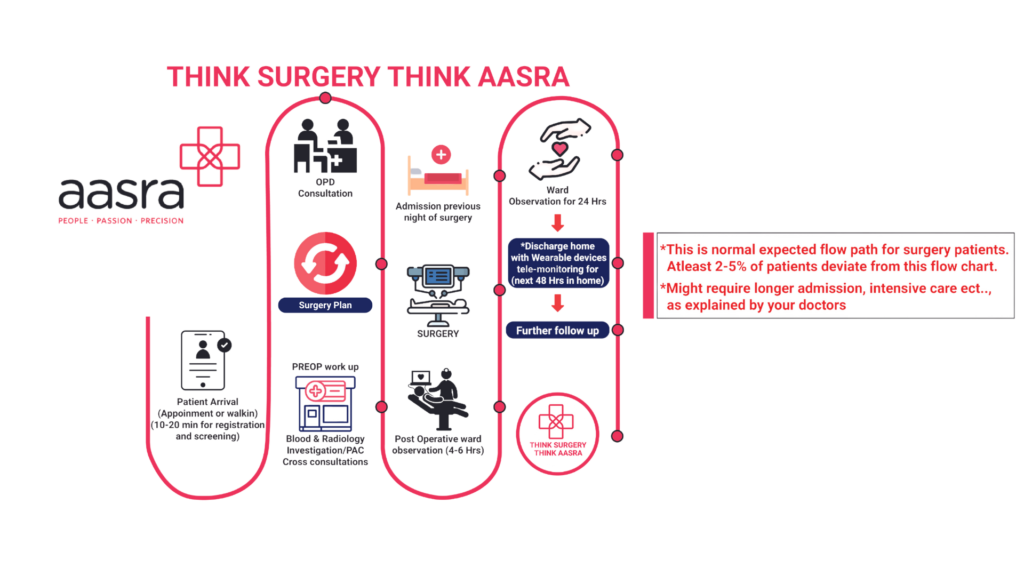
When to consult a doctor ?
As soon as you notice any problems in your anal area, you should ideally visit an anorectal specialist or proctologist. But even if you do not consult a proctologist right away, you must schedule a consultation with a colorectal surgeon if your anal pain lasts for more than a few days or if you are unable to find any relief from pharmaceuticals and home remedies. If you have any irregular or odd bowel movements or detect any rectal blood with your stool, you should not wait to consult your doctor about the situation. It is not advised to take chances if you are over 45 or if you have underlying medical concerns like diabetes or high blood pressure. You should see a doctor as soon as you can in such situations.
Our Specialist

***
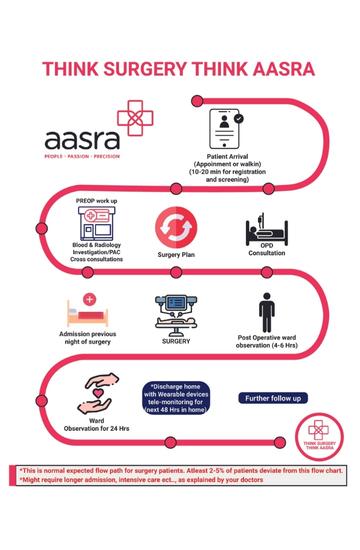

Insurance coverage
Insurance does cover the cost of the surgical procedure for a hysterectomy performed due to adenomyosis because it is on the list of procedures that are "medically required." The cost capping, however, may change from instance to case. Please get your healthcare or insurance company to validate this.
Insurance coverage

Insurance does cover the cost of the surgical procedure for a hysterectomy performed due to adenomyosis because it is on the list of procedures that are "medically required." The cost capping, however, may change from instance to case. Please get your healthcare or insurance company to validate this.
Frequently Asked Questions
Frequently Asked Questions
Facts and figures around robotic hip replacement
Why choose Aasra for robotic knee replacement treatment?
AASRA Hospital has the state of the art technology for performing joint replacement surgeries i,e MAKO Robitic joint replacement technology.
There is less post operative pain, reduced hospital stay ,patient can walk early and early recovery .
How to book appointment for aasra
Booking an appointment with a Aasra Orthopedician is easy.
Simply give us a call directly or complete our online appointment booking form. The only four questions it would ask you are “Your name,” “Contact,” and “tell us a little more about yourself.” Simply complete the form and press “submit.” One of our medical coordinators will give you a call soon to assist you in speaking with the doctor of your choice.
Facts and figures around robotic hip replacement
Why choose Aasra for robotic hip replacement treatment?
AASRA Hospital has the state of the art technology for performing joint replacement surgeries i,e MAKO Robitic joint replacement technology.
There is less post operative pain, reduced hospital stay ,patient can walk early and early recovery .
How to book an appointment for aasra?
Booking an appointment with a Aasra Orthopedician is easy.
Simply give us a call directly or complete our online appointment booking form. The only four questions it would ask you are “Your name,” “Contact,” and “tell us a little more about yourself.” Simply complete the form and press “submit.” One of our medical coordinators will give you a call soon to assist you in speaking with the doctor of your choice.
Questions to ask your doctor.
Treatment options & cost
Non-surgical treatments
Surgical treatments for anal fissure
How to prepare for anal fissure surgery?
What to expect after the surgery?
After anal fissure surgery
Non-surgical treatments
- Use of topical ointments – If you are suffering from anal fissure, you can try applying topical ointments in your cut or tear. You can either use topical ointments recommended by the doctor or get them over-the-counter. You can get relief from the condition by using medicines such as lidocaine hydrochloride (XYlocaine).
- Nitroglycerin – You can externally apply nitroglycerin to your anal fissure to increase blood flow to the damaged tissues. This in turn can help you promote healing and provide relief to your anal sphincter muscles. When home remedies and medicines fail to provide relief, most people resort to using nitroglycerin as a feasible line of treatment.
- Medications for blood pressure – Oral medications such as nifedipine or diltiazem can enhance blood pressure and provide relief to the anal sphincter muscle. These medications can be used either orally or can be applied externally. Blood pressure medicines can be taken when medicines like nitroglycerin fails are not effective.
- Botox injections – Another non-surgical option for treating anal fissures is injecting botox. Botox injection paralyzes the anal sphincter muscles and provides relief to the spasms.
Surgical treatments for anal fissure
If your anal fissure does not go away with medicinal treatments or any other treatment methods, it could be an indication of chronic anal fissure. In that case, the proctologist may recommend you undergo surgery for permanent treatment for anal fissure.
Open surgery – In open surgery, the anorectal surgeon makes a small incision in the anal sphincter to relax the anal muscle. Once the muscle is relaxed, it lets the anal fissure heal. Open anal fissure surgery is a conventional treatment procedure that comes with a certain amount of risks and complications, permanent incontinence being the most common one.
Laser surgery – During the procedure, the fissure doctor first administers local or general anesthesia to the patient. The doctor uses a laser probe to emit infrared radiation or laser beams at the surgical site [location of anal fissure]. The high-energy laser beams increase the blood flow to the area of the fissure and promote quick and proper healing of the fissure.
How to prepare for anal fissure surgery?
Before undergoing the surgery, it is important to make sure that you follow all the tips and advice from the doctor. Some of the tips for surgery preparation may include the following:
It is highly likely that the fissure doctor will tell you everything about the treatment procedure. All you need to do is follow the instructions diligently. If you are allergic to any medication, let the doctor know in advance.
- Quit drinking alcohol and smoking cigarettes at least a week before the surgery. This will help you recover and heal after the surgery quicker and in a much efficient manner.
- From the night before the surgery date, try to avoid eating heavy or large meals.
- On the day of the surgery, leave your valuable items at home while coming to the hospital.
- Get someone along with you while coming to the hospital for surgery who can help you drive home as you will not be allowed to drive.
- Get answers to all your questions about the surgery from the attending doctor or the surgeon.
- Before undergoing surgery, make sure either you or your guardian signs the consent form.
What to expect after the surgery?
Anal fissure surgery is most commonly done on an outpatient basis. Right after the surgery, the patient will be taken to a private recovery room. You will be kept under observation in the private ward and your vitals shall be monitored until you gain consciousness. Once the doctor sees it fit, you will be sent home after that.
Most patients with anal fissure – both open and laser – do not require more than 1-2 days of hospital stay. So, it is highly likely that you can leave for home within a day or two. Your surgeon or fissure specialist will give you pain relievers to be taken during the course of the treatment.
You may see drops of blood in your innerwear, toilet paper, and in your stool. You are also likely to feel some pain in your surgical site for a few days. There is nothing to fret about, it is normal. However, if you experience anything unusual in your health, it is extremely important to notify your doctor.
After anal fissure surgery
- Avoid all sorts of strenuous activities for a week or two after the surgery. Do not lift any heavyweights that can put pressure and strain in your surgical area.
- Take sitz baths at least 3-4 times a day or preferably after each bowel movement until the surgical site heals.
- You may bleed or feel itching at the surgical site for at least a few days after the surgery. A little bleeding and itching are common and normal.
- Try to prevent constipation. Prevent any measures which can cause constipation. Eat a fiber-rich diet, drink a lot of water, and do not hold your motion when you need to go.
- If your doctor has given any prescription for medication, you should make sure that you apply for the medicine at least two-three times a day at the surgical site or anal opening.
- Avoid using dry tissues to wipe yu anal opening after bowel movements for a few days. If at all you need to use, try using wet wipes instead.
- Consume a lot of fruits and vegetables.
- Cut down on the consumption of alcohol and caffeine. This may disturb your digestive system and may irritate your bowel functioning.
- Make sure to follow up with your doctor after the surgery. Making sure that you are on the right path to recovery can make a lot of difference in your overall health for the long term.
